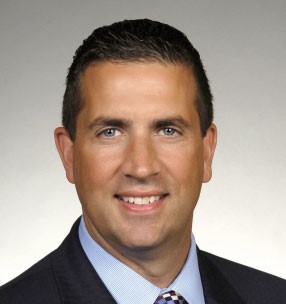
Article | Jul 2024 | Corporate Board Member
Private Company Compensation: Retaining Key Talent to Ensure Long-Term Success
How do private companies leverage compensation to retain high-performing employees and ensure sustained success?
The perennial challenge of finding, and keeping, top talent has been particularly arduous in recent years. In addition to fierce competition across a tight labor market, employers have had to adapt to shifting workforce dynamics, from the trend toward prioritizing work-life balance and purposeful work to increasing worker mobility. Private companies also face an added hurdle in competing with their public company peers to attract, retain, and motivate strong performers: combating the potential upside that access to equity-based compensation can provide.
The good news? A wide range of tools and tactics, including creative compensation structures, noncash rewards, training, innovative benefits, executive coaching, and career development programs, can help privately held businesses lure talent and nurture a culture of retention. “Often it’s a combination of factors, compensation with development opportunities, for example, that enables people to see a vision of their future at your privately held business, one they may not have access to at a publicly traded business,” Dan Moynihan, a managing director at Pearl Meyer, told private company CEOs gathered for a recent roundtable discussion on talent retention. “Compensation is one of the tools that companies can use to keep people in their seats, but it’s not the only answer.”
Economic uncertainty and market volatility are also impacting the efficacy of incentive plan compensation alone as a retention incentive, added Tim Dupuis, a principal at Pearl Meyer. “There’s been quite a bit of volatility in terms of annual incentive payouts, with organizations in some industries paying out below target for a year or two in a row, which causes retention concerns,” he explained. “Obviously, that’s what performance-based compensation plans are designed to do, pay out at, above, or below target based on actual performance results. But a period like this does make it that much tougher to nurture the company culture and keep satisfaction rates up and turnover low if you’re relying solely on compensation.”
"Often it's a combination of factors, compensation with development opportunities, for example, that enable people to see a vision of their future at your privately held business."
Incentive Insights
That point resonated with business leaders participating in the conversation, several of whom shared strategies their companies are deploying to compete in today’s war for talent. For example, Sandy Williams, chief administrative officer at Mutual of Enumclaw Insurance Company and a member of the company’s compensation committee, reported that insurance companies have had to look for alternatives to short- and long-term incentives in a flagging insurance market. “We’re in a once-in-a-lifetime hard market right now, and results are pretty terrible across the board, so people really aren’t seeing long-term incentive payouts,” she explained, adding that the company is rethinking elements of its compensation program and exploring other ways of strengthening its relationship with employees. “We have a supplemental executive retirement plan (SERP) that we’re in the process of reviewing. But the biggest thing is that retention bonuses are kind of taking the place of short- and long-term incentives right now. We also started offering executive coaching this year.”
By contrast, business performance has been strong at family-owned Koch Enterprises, where providing incentive compensation helps offset concerns candidates may have about joining a family business. “We do the best we can to [be at] market on pay with the public companies for each area of our business, sometimes we’re above, sometimes slightly below,” said Robert Koch, chair of the company, who explained that the diversified global entity’s incentive compensation is based on return on equity and profit growth metrics at each of its eight divisions rather than at the corporate level. “When we don’t have enough family members to run all the companies, we look both within and outside the company. Our outside hires are typically from other privately run companies, most of which don’t have a long-term compensation plan, so it’s an added benefit we offer."
Another approach private companies can employ is setting individual incentive pay goals for various levels of the organization to help ensure that employees feel they have the ability to influence the performance that will determine their payouts. “Tying a proportion of their annual incentive to individual performance rather than corporate performance helps them feel more involved,” explained Dupuis. “It provides a little more transparency into how executives and the broader employee population can control the outcome of the bonus, rather than waiting for corporate to tell them, ‘Hey, we performed at this level, here’s how your bonus will pay out.’”
Enhancing Engagement
Many private companies, however, are finding they need to look beyond competing on compensation to win at retaining talent. In the healthcare sector, talent poaching is so prevalent in IMA Medical Group’s home market of Central Florida that the company has embraced wellness and engagement initiatives in an effort to keep its employees from jumping ship. “We don’t have direct competitors, but some of the large healthcare systems here use us almost as a talent feeder,” said Karla Muniz, chief people officer. “We train people and then they leave us to go work at the hospitals.”
The company gave equity stakes to some team members to combat its turnover issue, but focusing on and communicating about its leadership development and wellness and engagement initiatives is also key to its recruiting and retention strategy. “We’re telling our story from a culture standpoint—that if you join our organization, this is what you should expect and feel and see,” said Muniz.
Private companies can also gain an edge in the labor market by responding to the greater emphasis today’s employees place on non-compensation-related workplace priorities, such as broader benefit packages, remote work opportunities, work/life balance, a purpose-driven culture, and career advancement opportunities. Koch Enterprises, for example, has had success boosting employee engagement by offering job rotations and conducting community outreach. “Moving people from one area to another and encouraging them to participate on boards and in charitable activities around the community helps them grow, and it also brings respect to the company,” said Koch. “It’s a win-win."
Boosting Benefits
Childcare, gym membership reimbursement, and mental health counseling are among the many additional benefits that private companies can explore to
strengthen their bond with employees. At Mutual of Enumclaw, Williams noted that listening to pain points raised by employees can surface ideas likely to move the needle on engagement. “We were hearing complaints from people saying, ‘I earn all this sick leave and I’m never sick, so what am I supposed to with it?’” he explained. “So we introduced a wellness reimbursement program where people can use their surplus sick time to pay for wellness reimbursement items.”
The company also has a volunteer time-off program that enables employees to get paid for volunteer time they put in doing charitable work in their communities, which further promotes a culture of purpose, teamwork, and belonging. “We’re really focused on employee engagement all the way through the executive leadership ranks,” says Williams. “I think that comes through and definitely helps with talent, especially during a difficult market."
Communicating Comp and Culture
Robust communication about the company’s value proposition for employees is another area of opportunity for privately held companies. “The questions we see from senior executives in a lot of family and private equity held business are, what’s the exit? What’s in it for me? Why should I stay?” said Moynihan. “If they stick around for five years, will something bigger than their cash compensation be available in the future? To the extent that you can address those questions with a more meaningful compensation package, you have the ability to not only attract, retain, and motivate talent, but also encourage your executives to think, act, and feel more like owners.”
At a time when employees are prioritizing culture and purposeful work, a company’s employee value proposition can come in many forms. Mutual of Enumclaw incorporates the company’s mission of helping people into its interview process to create emotional connections with job candidates. “How well you set up the interview process and the interview panel determines how people will feel about the story of your organization,” said Williams. “People apply for the job, but they accept the offer because of the culture and the things they want to be involved in—so finding a way to create an emotional connection in the interview process makes a big difference in terms of being able to bring people on.”
Used effectively, elements like those can also return a valued employee to the fold. “That cultural piece is powerful,” said Muniz, who said that former employees often regret their decision to leave once they onboard at a different company. “Within six months, they start recognizing that the grass really isn’t greener. We’re now leaning into rehiring by conducting boomerang campaigns in regrettable turnover situations. After about 90 days, my team will call and ask, ‘How’s it going? Do you like it there?’ to see if a conversation is warranted.”
As satisfying as it may be to lure back departed top performers, convincing them not to leave in the first place is the better bet. “That comes back to communication and making sure that all of your employees have a really good understanding of the different compensation, benefits, and programs available to them,” said Dupuis. “One of the things I’ve found that works really well is a one- or two-page summary because often the highlights of these programs are buried in a 30-page handbook that no one reads.”
Ultimately, the ability of private companies to attract and retain talent hinges on both having and communicating a multifaceted approach tailored to a company’s talent needs and circumstances, sums up Moynihan. “By integrating a competitive pay program and holistic employee engagement initiatives, private companies can successfully differentiate themselves in the competitive landscape and cultivate a dedicated workforce poised for sustained success."



